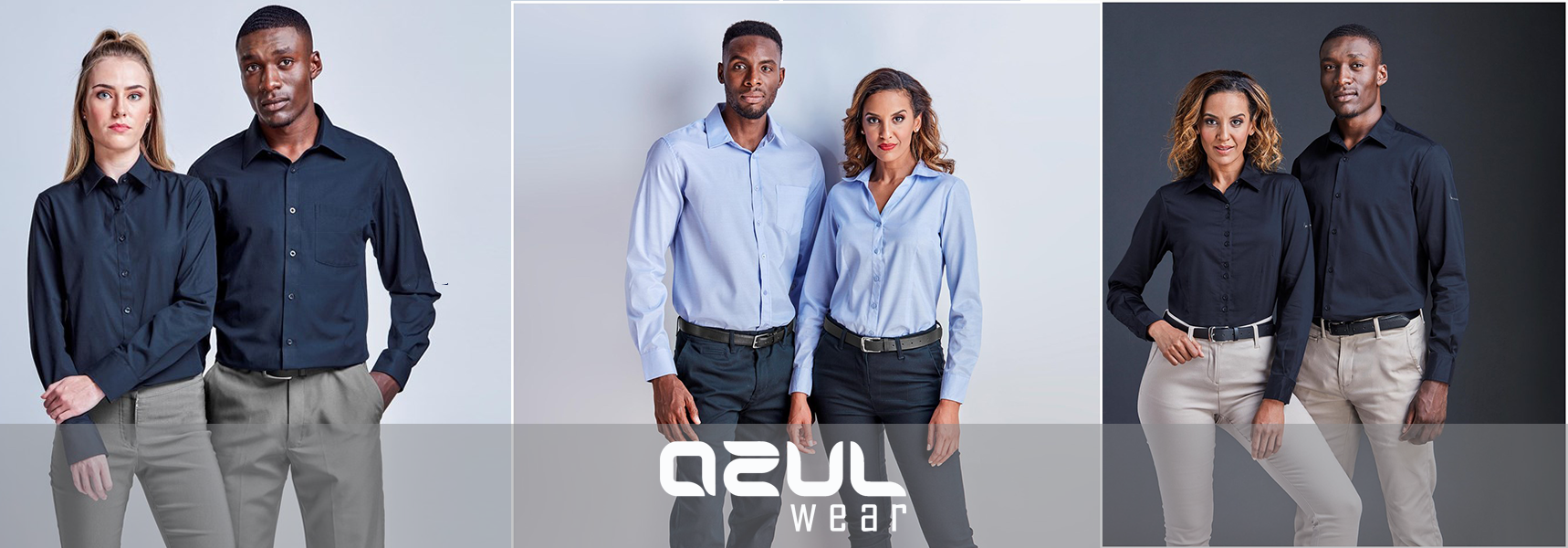How to Identify High-Quality Fabrics in Branded Clothing
How to Identify High-Quality Fabrics in Branded Clothing
Blog Article
The Relevance of Lasting Apparel: How It Influences the Setting and Your Storage room
Sustainable clothes is increasingly identified for its critical function in decreasing the ecological impact of the quick fashion market. By focusing on green materials and ethical production methods, it deals with pressing eco-friendly worries. This shift not only benefits the earth yet also influences customer choices, causing a more thoughtful approach to closet management. Comprehending these characteristics elevates crucial concerns about style's future and personal duty fit it.
The Environmental Footprint of Quick Fashion

Benefits of Sustainable Materials
Sustainable materials supply significant advantages, especially with environmentally friendly fabric selections that reduce ecological damage. These materials additionally show longevity and longevity, minimizing the need for frequent replacements. As an outcome, they contribute to a more lasting style sector and advertise accountable customer behavior.
Eco-Friendly Material Choices
While the apparel industry has actually long been related to fast trends and environmental damage, the increase of green fabric selections offers a transformative possibility. Sustainable products such as organic cotton, hemp, and Tencel have acquired appeal due to their lower ecological effect. These materials are usually produced without hazardous chemicals and need much less water, decreasing their carbon footprint - Branded Clothing. Furthermore, lots of environmentally friendly fabrics are naturally degradable, contributing to a circular economic climate by lessening waste. Choosing sustainable materials not only supports eco liable practices yet additionally promotes much healthier ecosystems. As customers come to be extra knowledgeable about their acquiring power, the demand for eco-friendly fabrics encourages brand names to innovate and embrace even more sustainable manufacturing techniques, inevitably benefiting the earth and future generations
Longevity and Longevity Advantages
Lots of customers are significantly identifying the sturdiness and durability advantages of sustainable products in their garments selections. Unlike traditional materials, lasting products such as natural cotton, hemp, and recycled polyester are engineered to hold up against wear and tear, resulting in garments that last much longer. This lowered regularity of replacement not only conserves consumers cash gradually but additionally diminishes waste produced by rapid style. Additionally, lasting clothing usually uses environment-friendly production techniques that boost fabric stamina, contributing to a reduction in the overall carbon impact. By purchasing resilient clothing, consumers can cultivate a much more lasting closet while delighting in top quality items that maintain their visual and performance with time. Subsequently, longevity and durability stand as key benefits of selecting sustainable materials.
Minimizing Waste With Sustainable Practices
Reducing waste in the garment industry can be achieved with ingenious practices such as upcycling and repurposing materials. In addition, adopting minimal wardrobe approaches motivates customers to focus on top quality over quantity, eventually decreasing apparel usage. Together, these strategies contribute significantly to a much more sustainable clothes version.
Upcycling and Repurposing Materials
Upcycling and repurposing materials have actually emerged as innovative strategies in the apparel industry, transforming disposed of fabrics into useful brand-new items. This strategy not only minimizes waste but likewise motivates creative thinking and uniqueness in apparel style. By taking old garments and materials, developers can create one-of-a-kind items that show personal design while lowering the need for brand-new sources. Additionally, upcycling frequently requires less energy and water compared to traditional production procedures, substantially decreasing the ecological impact of fashion. As customers end up being much more knowledgeable about sustainability, the popularity of upcycled garments proceeds to rise, advertising a round economy. Inevitably, these techniques add to a more lasting future, where fashion prioritizes environmental wellness over fast production and intake.

Minimalist Closet Methods
As people increasingly look for to lessen their ecological impact, taking on minimal closet techniques has actually obtained grip as a reliable technique to sustainable fashion. These methods stress quality over amount, motivating customers to curate a smaller sized collection of functional, resilient apparel. By concentrating on ageless items that can be blended and matched, individuals can decrease the frequency of purchases and inevitably decrease waste.Additionally, minimalism advertises conscious usage, advising customers to review the honest and environmental implications of their options. This approach not just promotes an extra sustainable lifestyle however likewise simplifies everyday decision-making relating to clothes. As individuals embrace minimal principles, they add to a fashion society that values sustainability and liable consumerism, ultimately causing a more eco-conscious society.
The Function of Moral Labor in Sustainable Fashion
While many customers are progressively knowledgeable about the ecological consequences of their clothes options, the value of moral labor methods in sustainable style can not be forgotten. Honest labor encompasses fair earnings, secure working problems, and respect for workers' civil liberties, creating the backbone of responsible style manufacturing. Brands that focus on honest labor not only boost areas but likewise established a requirement for responsibility in the industry.Moreover, the assimilation of honest practices cultivates transparency, making it possible for customers to make enlightened Full Article choices concerning their purchases. This technique contrasts dramatically with fast style's exploitative labor versions, which typically prioritize earnings over individuals. By sustaining business committed to honest labor, consumers add to a system that values human self-respect along with environmental sustainability. Subsequently, honest labor is not merely an add-on; it is vital to the wider goal of sustainable fashion, ensuring that the quest for eco-friendliness does not come with the expenditure of civils rights.
The Effect of Sustainable Apparel on Carbon Emissions
Lasting apparel has the potential to significantly lower carbon discharges related to the apparel industry. Traditional garment manufacturing adds especially to greenhouse gas discharges, mostly because of energy-intensive production processes and using non-renewable resources. In contrast, sustainable style concentrates on green materials, such as organic cotton or recycled fibers, which often require less power to produce.Moreover, lasting brand names have a tendency to take on a lot more reliable manufacturing methods, reducing waste and decreasing total emissions. By focusing on sturdiness and timeless layout, sustainable clothes motivates consumers to buy less frequently, more decreasing the carbon footprint related to overconsumption.Additionally, several lasting brands are committed to transparency in their supply chains, enabling consumers to make informed options that straighten with their worths. Inevitably, changing in the direction of sustainable clothing can result in a significant reduction in carbon exhausts, contributing to a much healthier world and a more lasting future for the fashion market.
Supporting Regional Economic Climates With Sustainable Selections
The shift towards lasting apparel not just addresses environmental concerns but likewise considerably advantages regional economic climates. By selecting sustainable style, customers frequently sustain small organizations and local craftsmens, improving area durability. These business usually run on a smaller sized range, focusing on craftsmanship and ethical practices over mass production.Investing in locally made sustainable clothes cultivates job production and this link promotes economic development within areas. As consumers become extra knowledgeable about the environmental effect of their purchases, they progressively seek out items that show their values. This demand urges neighborhood suppliers to adopt lasting methods, adding to a circular economy.Moreover, supporting regional companies lowers transportation exhausts, straightening with eco-conscious customer behavior. The interconnectedness of sustainable apparel and regional economic climates emphasizes the vital function that individual choices play in advertising both environmental and economic wellness. By promoting these regional links, neighborhoods can grow while additionally working in the direction of an extra lasting future.
Transforming Your Closet: Tips for a Lasting Wardrobe
As people look for to decrease their ecological impact, transforming a wardrobe into a lasting wardrobe ends up being a crucial step. One effective method is to examine existing apparel, keeping just things that are put on regularly which line up with sustainability goals. Focusing on top quality over amount is important; investing in resilient items from green brands can significantly decrease waste.Additionally, integrating used items can breathe new life into a wardrobe while minimizing ecological damage. Organizing clothes swaps with good friends or donating unused products can even more advertise sustainability.When buying, individuals should look for products that are natural, recycled, or naturally degradable, and prevent fast style sellers - Branded Clothing. Practicing mindful intake by attentively taking into consideration each purchase can add to a much more lasting lifestyle. By applying these pointers, one can produce look at this now a closet that shows personal design while supporting ecological stewardship
Regularly Asked Inquiries
How Can I Determine Sustainable Clothing Brands?
To identify sustainable clothes brand names, one need to look into products used, look for accreditations like Fair Trade, and examine the brand's transparency about their manufacturing processes, labor techniques, and environmental influence, guaranteeing eco-friendly and moral techniques are prioritized.
What Are the Prices Linked With Sustainable Style?
The costs related to sustainable style can differ significantly. Greater production expenditures, ethical sourcing, and eco-friendly materials typically bring about raised market prices, which might hinder some consumers while appealing to environmentally aware customers.
Can Sustainable Apparel Be Fashionable and fashionable?
Lasting garments can without a doubt be stylish and fashionable. Developers significantly focus on cutting-edge products and moral manufacturing techniques, verifying that fashion and sustainability can coexist. Customers now have varied options that mix aesthetic appeals with environmental consciousness.
Just How Does Washing Clothes Affect Their Sustainability?
Washing clothes considerably effects sustainability by consuming water and power, contributing to pollution, and causing microplastic launch. Constant cleaning can degrade textiles, reducing their life expectancy and boosting the requirement for replacements, ultimately aggravating ecological problems.
What Is the Life Expectancy of Lasting Clothing Compared to Fast Style?
The life expectancy of lasting garments typically exceeds that of rapid style things, often lasting a number of years due to high quality products and workmanship. On the other hand, rapid fashion garments may deteriorate swiftly, necessitating more constant substitutes. Sustainable garments is significantly recognized for its vital duty in minimizing the environmental impact of the quick style sector. While many consumers are progressively mindful of the environmental repercussions of their clothing selections, the value of honest labor methods in lasting fashion can not be ignored. Branded Clothing. Lasting clothing has the potential to considerably reduce carbon discharges connected with the style industry. In contrast, lasting fashion focuses on green materials, such as natural cotton or recycled fibers, which frequently call for less power to produce.Moreover, sustainable brands tend to take on more efficient manufacturing techniques, minimizing waste and lowering overall exhausts. By focusing on sturdiness and timeless style, sustainable clothing encourages consumers to get less frequently, more reducing the carbon footprint connected with overconsumption.Additionally, several sustainable brand names are dedicated to openness in their supply chains, making it possible for consumers to make educated selections that line up with their worths
Report this page